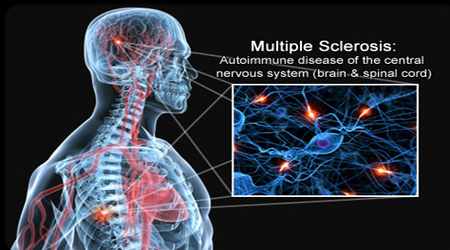Download the full study by clicking on the PDF image above.
Abstract
To date, little is known about the aetiology of multiple sclerosis (MS). The onset of this disease is generally after puberty, reaching its peak incidence at age 30. The literature suggests a higher incidence in women than in men (3:2 ratio), in whites compared to blacks (2:1 ratio), and rare occurrence in oriental populations. Geographical dusters of MS have been reported in areas where goitre is endemic, in regions with low soil selenium and iodine concentration, exposure to some heavy metals and a high latitude.
Although a role for genetic factors is suggested by a 10-50 fold greater incidence of MS in relatives of MS patients. Variations in its prevalence across continents and alteration in the risk of acquiring MS among children of immigrants to reflect the rates of the adoptive country suggest a role of lifestyle and local environmental factors. Increased risk has been associated with viral infections, higher socioeconomic status and dietary habits which characterize over-nutrition.
Most reports on MS and nutritional factors are based on ecologic correlation studies and suggest an association with some nutrients and foods such as elevated intakes of energy and animal fats, (particularly saturated fats), milk and oats. In a correlation analysis, Esparza et al, using data from the food balance sheets of the United Nations Food and Agriculture Organization (FAO) for the period 1979-1981, found significant positive and independent correlations of MS mortality with saturated fatty acids, animal fat, animal minus fish fat, and latitude.
In a case-control study conducted in Italy by Tola et al, cases had higher intakes of bread, pasta, butter and lard, legume soup, horse flesh, and caffeine-containing beverages such as coffee and tea, before the age of 15. During adulthood (after 15 years of age), however, eggs (odds ratio [OR] = 5.95), wine (OR = 0.37) and mineral water (OR = 0.30) distinguished cases and controls.
Age at exposure has also been reported to be of importance by Hutter who suggested that the influence of sunlight and diet may be of greatest importance during the first two decades of life. There is very little in the literature on observational studies carried out in North America on diet and MS. They have carried out a case-control study of dental amalgam, nutrition and sociodemographic factors and MS. The present article shows the results of this study which was conducted with validated dietary methods, to explore the role of nutritional factors in the aetiology of this disease.










Leave A Response